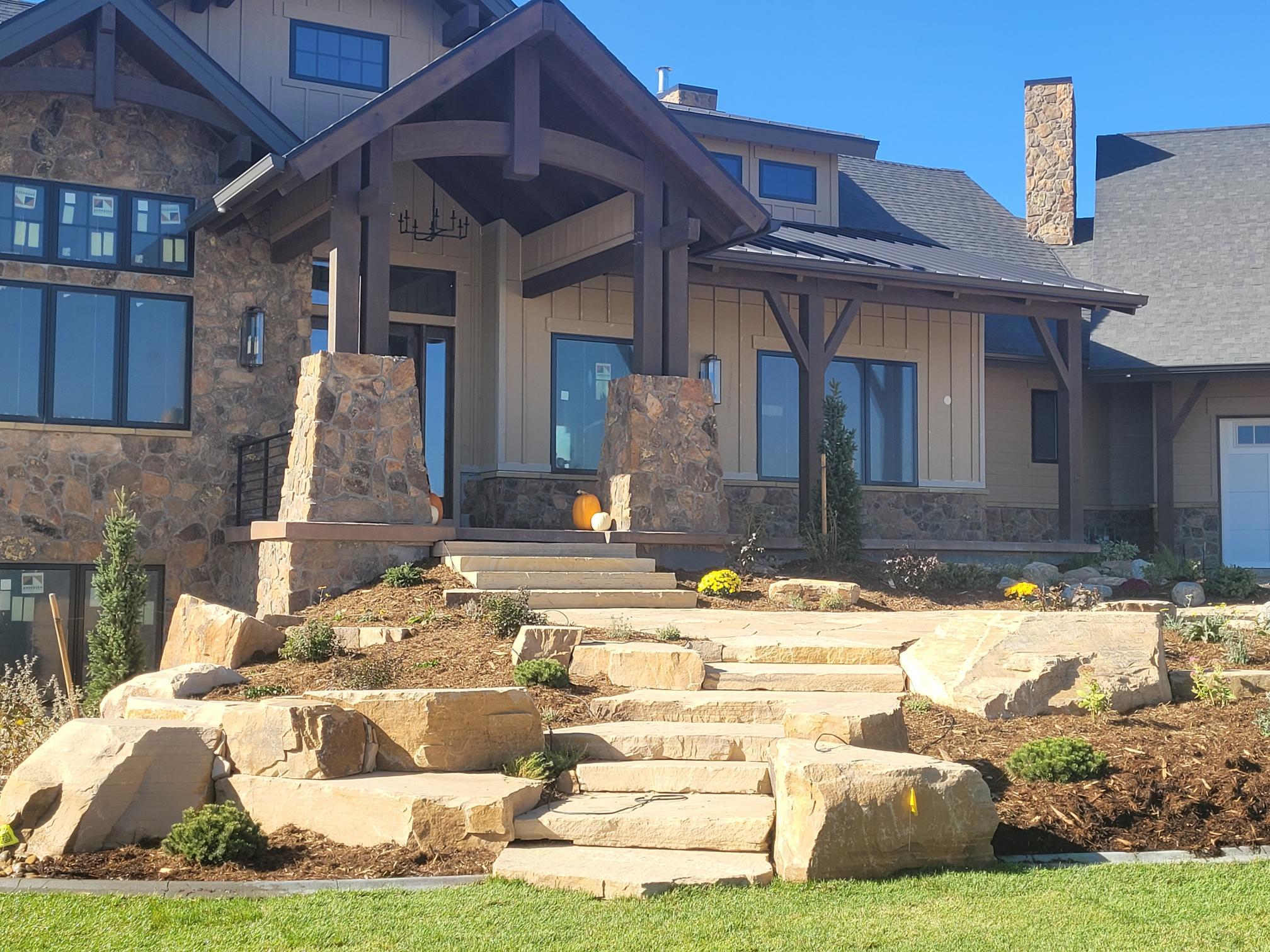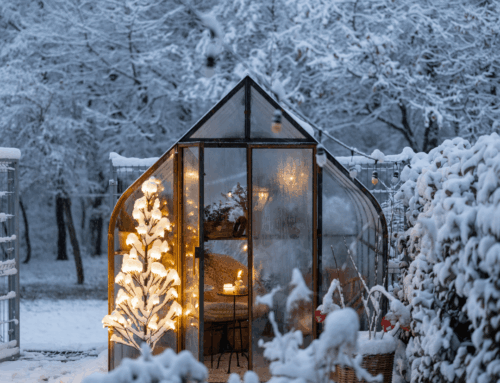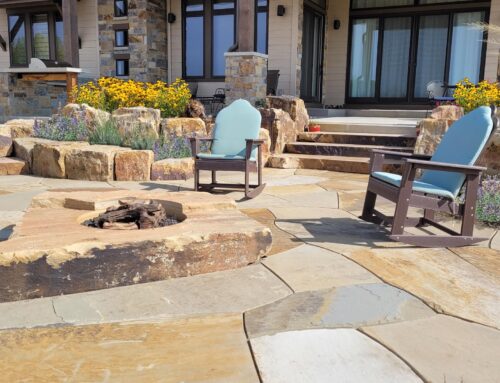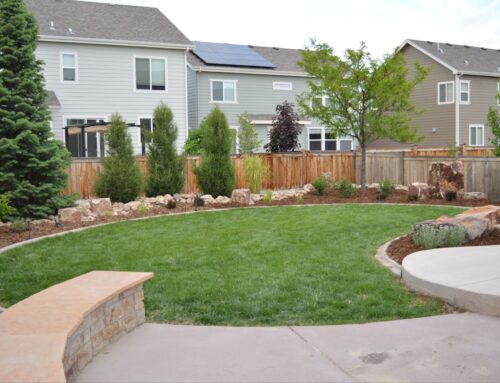Colorado’s winters bring stunning snowy landscapes, crisp air, and a unique set of challenges for homeowners looking to maintain beautiful, functional yards year-round. At Grounded Landscape Designs, we specialize in creating landscapes that are not only beautiful in every season but also resilient against Colorado’s tough winters. Our team understands the local climate and uses sustainable practices to design outdoor spaces that thrive year-round.

Designing a winter-friendly landscape means considering cold temperatures, snow accumulation, and the region’s semi-arid climate. If you’re planning to create an outdoor living space that looks great even in the cold months, here are some practical tips and tricks to think about with your next landscape project:
1. Choose Cold-Hardy, Native Plants
When designing a sustainable landscape for the Colorado winter, start with plant selection. Native plants have adapted to the state’s fluctuating temperatures and dry climate, making them more resilient and low-maintenance. Consider species like:
- Colorado Blue Spruce: This iconic evergreen adds vibrant color year-round.
- Pinyon Pine: A slow-growing, drought-tolerant pine perfect for winter interest.
- Rabbitbrush: Known for its golden hues in the fall, it adds structure through winter.
- Kinnikinnick (Bearberry): A ground cover that retains its leaves even in the snow.
Native grasses like Little Bluestem or Switchgrass add movement and texture to snowy landscapes. Native plant landscaping in Colorado not only supports local ecosystems but also ensures long-term success with less maintenance.
2. Focus on Evergreens for Year-Round Color
Winter landscapes can feel stark without strategic plant choices. Evergreens offer structure, color, and texture during the winter months. Beyond the classic spruce and pine, consider broadleaf evergreens like Manzanita or Oregon Grape Holly. Mix various shapes and sizes of evergreens to create layers of interest. Clusters of evergreens can also act as windbreaks, protecting your home from harsh winter winds and reducing energy costs.
3. Add Hardscape Elements to Your Outdoor Space
Hardscape features add definition and functionality to winter landscapes when plants are dormant. Consider incorporating:
- Stone Pathways: Use permeable materials to minimize ice buildup.
- Retaining Walls: Add dimension and prevent soil erosion.
- Decorative Rock Gardens: Low-maintenance and visually appealing against snow.
- Outdoor Fire Pits: Create a cozy, year-round gathering space.
Hardscaping materials like flagstone, granite, and river rock complement natural surroundings while withstanding Colorado’s freeze-thaw cycles.
4. Plan for Snow and Ice Management
Snow and ice can damage plants and hardscapes if not properly managed. Design pathways and patios with gentle slopes to promote drainage and prevent ice buildup. Consider heated walkways if snow removal is a persistent challenge.
When planting trees, avoid placing them under rooflines where falling snow can cause damage. Opt for deciduous trees like Aspen or Honeylocust in areas where direct sunlight access is important; they’ll provide shade in summer but allow sunlight to reach your home in winter.
5. Incorporate Winter-Interest Plants
While evergreens provide the backbone of a winter landscape, other plants can add seasonal interest with unique textures, bark, or berries. Some standout choices include:
- Red-Twig Dogwood: Bright red stems pop against snowy backdrops.
- Winterberry Holly: Vivid red berries offer food for birds and a splash of color.
- Paper Birch: White bark creates striking contrast in winter landscapes.
- Ornamental Grasses: Their feathery plumes look stunning dusted with snow.
6. Use Lighting to Enhance Winter Beauty
Winter days are shorter, but landscape lighting can extend your outdoor enjoyment. Use warm LED lights to highlight architectural features, illuminate pathways, and create a welcoming ambiance. Uplighting evergreens and downlighting from trees add drama and depth to snow-covered landscapes.
7. Mulch Around Plants for Protection
Winter mulching protects plant roots from temperature extremes and helps retain moisture during dry winter months. Apply a 2-4 inch layer of mulch around perennials, trees, and shrubs. Organic mulches like wood chips or pine needles are particularly effective.
8. Plan for Wildlife Interaction
Colorado’s winter landscapes often attract wildlife like deer, rabbits, and birds. While birdwatching can be enjoyable, deer and rabbits may damage plants. Protect vulnerable plants with fencing or choose wildlife-resistant species like Russian Sage or Blue Mist Spirea.
Bonus Tips for Sustainable Winter Landscaping
- Xeriscaping: Incorporate water-wise practices to reduce winter watering needs.
- Snow Fences: Strategically placed snow fences help control drifting snow.
- Composting: Use organic compost to enhance soil health, even during winter.
Start Your Landscaping Project Today!
Designing a stunning landscape that shines through Colorado’s winters requires thoughtful planning and strategic choices. By incorporating native plants, evergreens, hardscapes, and winter-interest plants, you can create a yard that remains beautiful and functional all year long.
If you’re ready to transform your Colorado landscape for winter and beyond, Grounded Landscape Designs is here to help. Contact us today to schedule a consultation and start crafting your dream outdoor space.
Check out our other landscaping services here!




